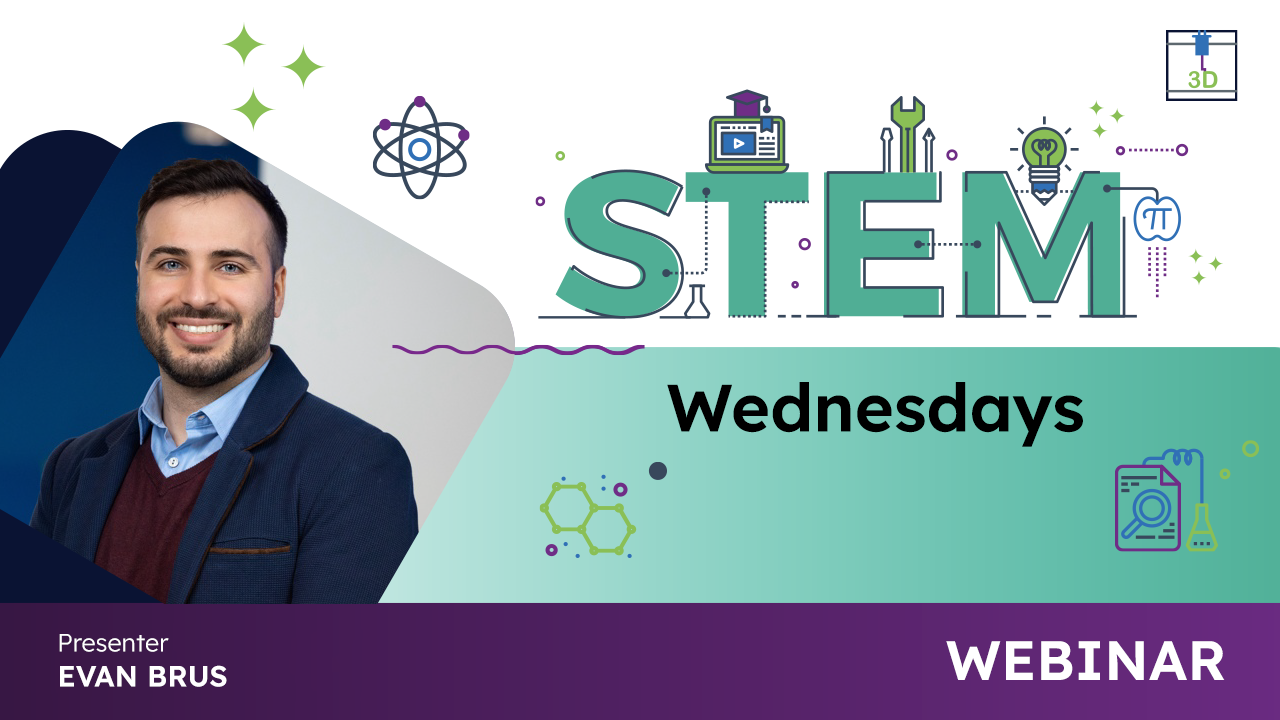Evan Brus, Training and Development Specialist for EOS Education will guide a fun, hands-on project using the Robo 3D printer. Students are welcome, too!
Register Now!
Connecting Subjects for Deeper Learning
Exploring a single topic can open the door to endless discoveries across different subjects. Take fossils, for example—studying these ancient remains not only teaches students about dinosaurs but also connects them to history, science, and storytelling. By incorporating 3D printing, educators can bring fossils to life, allowing students to design and create their own models. This hands-on approach enhances learning, making abstract concepts more accessible and sparking deeper curiosity across subjects. Integrating subjects like science and history encourages students to think critically and engage in more meaningful exploration.
Bring Dinosaur Fossils to Life with Tinkercad and Robo E4
The Robo E4 3D printer integrates seamlessly with Tinkercad, a user-friendly web app perfect for students and educators looking to explore 3D design. To start, educators and students can search Tinkercad’s extensive library of dinosaur fossil designs. Once they’ve selected a fossil, they can easily resize and customize it to fit the project’s requirements, ensuring it meets the desired specifications for their classroom lesson.
After finalizing the design, students export the file and send it directly to RoboPrint, the Robo E4’s intuitive printing platform. RoboPrint automatically calibrates and preps the design for printing, simplifying the process for users of all experience levels. With the press of a button, the Robo E4 brings the digital fossil to life, printing an accurate, physical model ready for classroom exploration. This step-by-step process introduces students to the fundamentals of 3D design while reinforcing skills like creativity, problem-solving, and critical thinking.
The combination of Tinkercad’s robust design capabilities and the Robo E4’s user-friendly technology offers a dynamic, hands-on learning experience, helping students transform their ideas into real-world creations.
Research-Backed Benefits of Integrated Learning
Research shows that integrating subjects fosters a deeper understanding of content by helping students make connections between topics. For younger students, studying dinosaur bones can involve designing simple 3D models of fossils in Tinkercad, allowing them to explore science and history simultaneously. They can then print these models using the Robo E4 printer, sparking curiosity and reinforcing their understanding of ancient creatures.
Older students can dive deeper by creating more complex designs, examining the anatomy of different dinosaur species, and even exploring the historical significance of fossil discoveries. This integrated learning boosts critical thinking and problem-solving while preparing students for real-world challenges across multiple disciplines.
Developing Critical Soft Skills for Success
Integrating subjects and incorporating 3D printing nurtures essential soft skills that benefit students as they progress from kindergarten onward. Here are key soft skills developed through this engaging learning approach:
Teamwork: Collaborative projects encourage students to work together, fostering a sense of community and the ability to share ideas and resources effectively.
Communication: Students practice articulating their thoughts and feedback during group activities, enhancing their verbal and non-verbal communication skills.
Problem-Solving: The iterative design process challenges students to identify and resolve issues, boosting their ability to think critically and find solutions.
Creativity: Transforming digital designs into physical objects allows students to express their ideas and explore innovative solutions, enriching their creative thinking.
Perseverance: Working through design challenges teaches students the value of persistence, helping them learn to overcome setbacks and remain committed to their projects.
